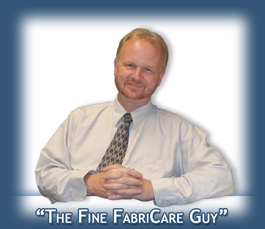For several years, cleaners have focused their efforts in both testing and cleaning to find ways to prevent color bleeding and browning, (which are still both concerns for fine fabric specialists), but have long been resolved by cleaners who understand the chemistry of cleaning.
In a recent discussion that I had with leading furniture manufacturers, the individuals with whom I spoke did not complain about cleaners damaging dyes or causing browning, they instead spoke about the incredible amount of texture damage done during the cleaning process!
Today’s fine fabric specialist must recognize that delicate textures are not just velvet, which was for years the fabric most concentrated on in cleaning classes, but now also include such varied products as chenille and microfibers. While the difference between a rayon chenille and a polyester microfiber may see to be worlds apart, both can be easily (and perhaps irreparably) damaged by a careless cleaner.
Use this quick checklist to help to prevent damaging the furniture your customer has entrusted you to care for:
- PreInspect and PreQualify your work: Many of these fabrics have already been damaged by abuse from your customer, their children and/or their pets. Make sure you discuss pre-existing problems before you clean.
Qualify your work: Many of these fabrics have already been damaged by abuse from your customer, their children and/or their pets. Make sure you discuss pre-existing problems before you clean. - Precondition using a soft brush, and only brush in the direction of the lay of the tap, if any.
- Extract using the “Upholstery Pro” upholstery cleaning tool. There are plenty of good “cleaning tools”, but there is no tool I have ever used that creates as little distortion during the cleaning process as this tool. The “Upholstery Pro” cleans and extracts as well as any tool you can use, but most importantly will not leave jet streaks, and creates only an occasional easy to remove “slight edge distortion” at the edges of the tool. Post grooming of fabric is far easier and less time consuming when you use the Upholstery Pro.
- Use as little cleaning or rinsing agent as possible to prevent stiffness from residues. Never use carpet cleaning detergent in your “rinse”, and even many acid rinses may leave sticky residues. Sapphire Scientific Upholstery Rinse is unique for its very low level of surfactant content, and is my preferred rinsing agent for all soft textured fabrics.
- Groom the fabric. Grooming techniques for velvet, chenille, and microfibers are all somewhat different, but all should be groomed immediately after extraction, then again after drying with fans.
